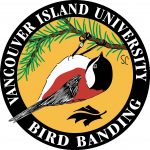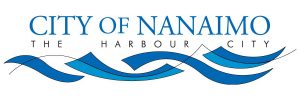Ecological Impacts and Management of the Canada Goose (Branta canadensis) on Vancouver Island, BC
The Canada goose (Branta canadensis) is a common sight along the British Columbia coast, particularly around Central and Southern Vancouver Island. However, this was not always the case. Canada geese were only migrants and winter visitors before a few geese were introduced in the 1920s and 30s (Dawe and Stewart 2010). These early introduction attempts yielded a small resident population of birds in the Victoria area, but it wasn’t until more intense introduction programs took place in the 1970s and 80s that the population really started to grow (Dawe and Stewart 2010). These introduction attempts were made by both government and private organizations in an effort to increase hunting opportunities around the island. Today, the population of resident geese is estimated to be 15,000 and is growing rapidly; the geese are often considered nuisances, and degradation of coastal and estuarine ecosystems, along with crops and agricultural land, is a major concern (Dawe and Stewart 2010; Isaac-Renton et al. 2010; RCGMS 2012).
Canada geese imprint on the area they were hatched and return to breed in that same area themselves. The combination of this life history trait with introduction programs has resulted in the growth of “resident” flocks which don’t have the urge to migrate (RCGMS 2012; Dawe and Stewart 2010; Dawe et al. 2011). This is a familiar problem for most of North America, and Vancouver Island is no exception. Resident geese have higher breeding success because they aren’t subjected to the high energy demands of migration; this allows more energy to be used for reproduction than their migratory counterparts (Dawe et al. 2011).
For example, no Canada geese were observed in the Englishman River estuary in June of 1974; however, by 2007 at least 73 nesting pairs were observed. The first pair of nesting Canada geese were observed on the Little Qualicum River estuary in the summer of 1984, and by 2010 at least 45 pairs were observed nesting (Dawe and Stewart 2010). Although these populations don’t seem excessive, it is clear that they are growing quickly. In the opinion of biologist Neil Dawe, the population of geese on Vancouver Island has already exceeded the carrying capacity for the region (Hume 2010; Dawe et al. 2011). Dawe et al. (2011) found that geese are altering the floral composition of East Coast Vancouver Island estuaries. Alterations of the plant community has caused erosion, affected nutrient-cycling, shading, and soil salinity levels. Changes to these factors has altered ecosystem functioning altogether, perhaps permanently (Dawe et al. 2011).

Example 1 of damage inflicted by Canada goose grazing, Little Qualicum River Estuary, BC (top photo August 1978; bottom photo August 2005) [Source]

Example 2 of damage inflicted by Canada goose grazing, Little Qualicum River Estuary, BC (top photo August 1980; bottom photo August 2005) [Source]
The overabundance of Canada geese on Vancouver Island poses a special management problem. Along with human/goose conflicts such as crop damage and airport safety, the geese are causing damage to local ecosystems, which in turn is affecting native flora and fauna (Dawe and Stewart 2010; Isaac-Renton et al. 2010; RCGMS 2012). At the very least, long-term stabilization of the population is needed to ensure that these problems don’t become worse. However, although introduced, euthanization of resident geese to rectify these problems is frowned upon by the majority of the general public (Braband and Clark 1991; Lefebvre unknown; Hume 2010). Biologist Neil Dawe believes that in order to protect local estuarine ecosystems, Canada geese may have to be eradicated altogether (Hume 2010). In reality, despite damage to local ecosystems clearly caused by the geese, public opposition to a cull makes it an unlikely solution. This means that it is up to wildlife managers to bring the population growth under control, which can be done through hunting and egg addling (RCGMS 2012). Hunting is another management tool, however many of the resident goose populations utilize urban areas, where hunting isn’t an option due to nearby proximity of houses and bystanders (RCGMS 2012; Smith et al. 1999). Hazing of geese to chase them out of areas where they are a problem isn’t a long-term solution, as the geese just become a problem elsewhere and/or eventually return to the original area (RCGMS 2012; Smith et al. 1999). The Regional Canada Goose Management Strategy (2012) predicts that the growth in the population of Canada geese in the Capital Region can be curbed through annual egg addling and removing just 100 adult birds per year by hunting. In fact, if carried out on an annual basis, this management strategy would eventually cause a decrease in the population (RCGMS 2012).
![Projected population by the Regional Canada Goose Management Strategy [Source]](http://studentblogs.viu.ca/biol325canadagoose/files/2015/10/Screen-Shot-2015-10-22-at-10.56.57-PM.png)
Projected population by the Regional Canada Goose Management Strategy [Source]
References:
Smith, A.E., Craven, S.R., and Curtis, P. D. 1999. Managing Canada geese in urban environments. Jack Berryman Institute Publication 16, and Cornell University Cooperative Extension, Ithaca, N.Y.; [cited 2015 Sep 25]. Available from: https://ecommons.cornell.edu/bitstream/handle/1813/66/Managing%20Canada%20Geese;jsessionid=15B926B1D86681CE745746849992342A?sequence=2
Cornell University [Internet]. 2015. Canada goose – branta canadensis: life history; Ithaca, NY: Cornell Lab of Ornithology; [cited 2015 Sep 25]. Available from: http://www.allaboutbirds.org/guide/Canada_Goose/lifehistory
Butchart, S., Ekstrom, J., Khwaja, N., and Pilgrim, J. [Internet]. 2015. Birdlife international species factsheet: canada goose – branta canadensis; [cited 2015 Sep 25]. Available from: http://www.birdlife.org/datazone/speciesfactsheet.php?id=384
USFWS [Internet]. 2015. Swans and geese; [cited 2015 Sep 26]. Available from: http://flyways.us/duck-identification-resources/swans-and-geese
Johnson, S. [Internet]. 2011. Beauty of birds: canada geese; [cited 2015 Sep 26]. Available from: http://beautyofbirds.com/canadageese.html
Ducks Unlimitied [Internet]. 2015. Learn about wetlands: canada goose – branta canadensis; Stonewall, MB: Ducks Unlimited Canada; [cited 2015 Sep 28]. Available from: http://www.ducks.ca/learn-about-wetlands/wildlife/canada-goose/
University of Auckland [Internet]. 2010. Branta canadensis (bird); Auckland, NZ: Auckland University; [cited 2015 Sep 29]. Available from: http://www.issg.org/database/species/ecology.asp?si=1427&lang=EN
State of Connecticut [Internet]. 2012. Wildlife in connecticut: wildlife fact sheet: canada goose – branta canadensis; Hartford, CT: State of Connecticut; [cited 2015 Oct 1]. Available from: http://www.ct.gov/deep/lib/deep/wildlife/pdf_files/outreach/fact_sheets/cdgoose.pdf
Isaac-Renton, M., Bennett, J.R., Best, R.J., Arcese, P. 2010. Effects of introduced canada geese (branta canadensis) on native plant communities of the southern gulf islands, british columbia; Ecoscience [Internet]; [cited 2015 Oct 1]; 17(4): 394-399. Available from: http://www.bioone.org/doi/full/10.2980/17-4-3332 doi: http://dx.doi.org/10.2980/17-4-3332
Brakhage, G.K. 1965. Biology and behavior of tub-nesting canada geese; J Wildlife Manage [Internet]; [cited 2015 Oct 1]; 29(4): 751-771. Available from: http://www.jstor.org/stable/3798552?pq-origsite=summon&seq=1-%20page_scan_tab_contents#page_scan_tab_contents doi: 10.2307/3798552
Mowbray, T.B., Ely, C.R., Sedinger, J.S., Trost, R.E. [Internet]. 2002. The birds of north america online: canada goose – branta canadensis; Ithaca, NY: Cornell Lab of Ornithology; [cited 2015 Oct 3]. Available from: http://bna.birds.cornell.edu/bna/species/682/articles/introduction
Birdweb [Internet]. 2015. Canada goose – branta canadensis; Seattle, WA: Seattle Audubon Society; [cited 2015 Oct 3]. Available from: http://www.seattleaudubon.org/birdweb/bird/canada_goose
Cornell University [Internet]. 2015. Cackling goose – branta hutchinsii: life history; Ithaca, NY: Cornell Lab of Ornithology; [cited 2015 Oct 5]. Available from: http://www.allaboutbirds.org/guide/Cackling_Goose/lifehistory
Pearce, J.M., Bollinger, K.S. 2003. Morphological traits of pacific flyway canada geese as an aid to subspecies identification and management; J Field Ornithol [Internet]; [cited 2015 Oct 2]; 74(4): 357-359. Available from: http://www.jstor.org/stable/4131045?pq-origsite=summon&seq=1-%20page_scan_tab_contents#page_scan_tab_contents
Sibley, D. [Internet]. 2007. Distinguishing cackling and canada goose; unknown: Sibley Guides; [cited 2015 Oct 4]. Available from: http://www.sibleyguides.com/2007/07/identification-of-cackling-and-canada-goose/
Bromley, R.G., Rothe, T.C., 2003. Conservation assessment for the dusky canada goose (branta canadensis occidentalis baird); Portland, OR: US Department of Agriculture, Forest Service: Pacific Northwest Research Station [Internet]; [cited 2015 Oct 4]. Available from: http://www.arlis.org/docs/vol1/54830739.pdf
USGS [Internet]. 2012. North america breeding survey trend results: canada goose – branta canadensis; [cited 2015 Oct 4]. Available from: http://www.mbr-pwrc.usgs.gov/cgi-bin/atlasa12.pl?01720&1&12&csrfmiddlewaretoken=3YKakk7LxT2ki6NSpl4mstudYCqdW02C
GeesePeace [Internet]. Date unknown. Why geese do not migrate; [cited 2015 Oct 6]. Available from: http://www.geesepeace.com/whygeesedonotmigrate.html
University of Wisconsin [Internet]. 2007. Migratory birds of the great lakes: canada goose migration – page 2; Madison, WI: University of Wisconsin; [cited 2015 Oct 4]. Available from: http://www.seagrant.wisc.edu/birds/Canada_Goose_migration2.html
National Audubon Society [Internet]. 2015. Guide to north american birds: canada goose – branta canadensis; [cited 2015 Oct 4]. Available from: http://www.audubon.org/field-guide/bird/canada-goose
Link, R. [Internet]. 2015. Living with wildlife: canada geese; Olympia, WA: Washington Department of Fish and Wildlife; [cited 2015 Oct 4]. Available from: http://wdfw.wa.gov/living/canada_geese.html
Dawe, N.K., Stewart, A.C. 2010. The Canada goose (branta canadensis) on vancouver island, british columbia; Vancouver, BC: British Columbia Birds, J BC Field Ornithol [Internet]; [cited 2015 Oct 20]; 20: 24-40. Available from: http://www.academia.edu/12104403/The_Canada_Goose_Branta_canadensis_on_Vancouver_Island_British_Columbia._British_Columbia_Birds_20_24-40
Dawe, N.K., Boyd, W.S., Buechert, R., Stewart, A.C. 2011. Recent, significant changes to the native marsh vegetation of the little qualicum river estuary, british Columbia; a case of too many canada geese (branta canadensis)?; Vancouver, BC: British Columbia Birds, J BC Field Ornithol [Internet]; [cited 2015 Oct 20]; 21: 11-31. Available from: http://www.researchgate.net/publication/275032471_Recent_significant_changes_to_the_native_marsh_vegetation_of_the_Little_Qualicum_River_estuary_British_Columbia_a_case_of_too_many_Canada_Geese_%28Branta_canadensis%29
Hume, M. 2010 Dec 21. Bird lover advocates eradication of canada geese. Globe and Mail: Env. Sect. [Internet]; [cited 2015 Oct 20]. Available from: http://www.theglobeandmail.com/news/british-columbia/bird-lover-advocates-eradication-of-canada-geese/article560256/
Braband, L.A., Clark, K.D. 1991. Perspectives on wildlife nuisance control: results of a wildlife damage control firm’s customer survey; Lincolm, NE: University of Nebraska [Internet]; [cited 2015 Oct 21]. Available from: http://digitalcommons.unl.edu/cgi/viewcontent.cgi?article=1007&context=ewdcc5







